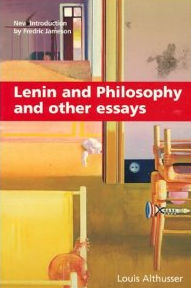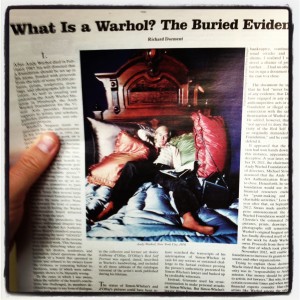 Louis Althusser’s (d. 1990) essay collection, Lenin and Philosophy and Other Essays (1968; English translation 1971), in particular the essay entitled “Ideology and Ideological State Apparatuses (Notes Towards an Investigation),” is crucial for anyone interested in rethinking the common perception of identity-as-expressed-quality as instead being the interiorized result of prior and assorted (i.e., among actors of varying authority) social acts of identification and interaction (as briefly suggested in this post). As Althusser wrote in that essay:
Louis Althusser’s (d. 1990) essay collection, Lenin and Philosophy and Other Essays (1968; English translation 1971), in particular the essay entitled “Ideology and Ideological State Apparatuses (Notes Towards an Investigation),” is crucial for anyone interested in rethinking the common perception of identity-as-expressed-quality as instead being the interiorized result of prior and assorted (i.e., among actors of varying authority) social acts of identification and interaction (as briefly suggested in this post). As Althusser wrote in that essay:
I shall then suggest that ideology ‘acts’ or ‘functions’ in such a way that it ‘recruits’ subjects among the individuals (it recruits them all), or ‘transforms’ the individuals into subjects (it transforms them all) by that very precise operation which I have called interpellation or hailing, and which can be imagined along the lines of the most commonplace everyday police (or other) hailing: ‘Hey, you there!’

 Perhaps one of the more important articles demonstrating, in a practical situation (the production and sales of so-called Oriental carpets), how discourses on authenticity are ways of managing an otherwise unregulated economy of signification (both meaning and value), is
Perhaps one of the more important articles demonstrating, in a practical situation (the production and sales of so-called Oriental carpets), how discourses on authenticity are ways of managing an otherwise unregulated economy of signification (both meaning and value), is  Those interested in how discourses on authenticity work to–as this article states it–stabilize an economy (of any form of signification, be it meaning or money) should consider the current issue (June 20, 2013, vol. 60/11) of The New York Review of Books and its article
Those interested in how discourses on authenticity work to–as this article states it–stabilize an economy (of any form of signification, be it meaning or money) should consider the current issue (June 20, 2013, vol. 60/11) of The New York Review of Books and its article